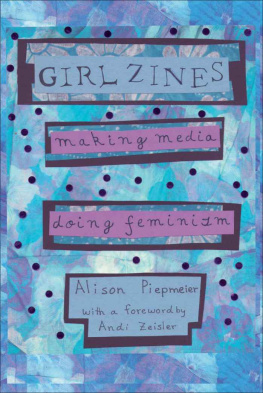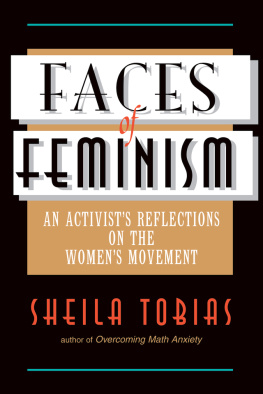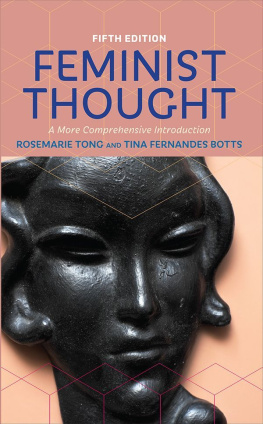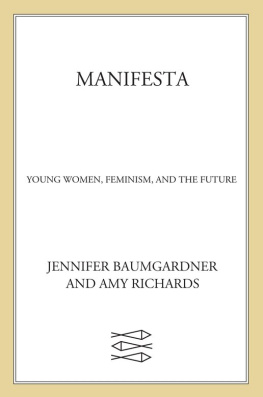Girl Zines
Girl Zines
Making Media, Doing Feminism
Alison Piepmeier
Foreword by Andi Zeisler

NEW YORK UNIVERSITY PRESS
New York and London
www.nyupress.org
2009 by New York University
All rights reserved
Library of Congress Cataloging-in-Publication Data
Piepmeier, Alison.
Girl zines : making media, doing feminism / Alison Piepmeier ;
foreword by Andi Zeisler.
p. cm.
Includes bibliographical references and index.
ISBN-13: 9780814767511 (cl : alk. paper)
ISBN-10: 0814767516 (cl : alk. paper)
ISBN-13: 9780814767528 (pb : alk. paper)
ISBN-10: 0814767524 (pb : alk. paper)
1. Zines. 2. Womens periodicals. I. Title.
PN4836.P54 2009
305.42dc22 2009020628
New York University Press books are printed on acid-free paper,
and their binding materials are chosen for strength and durability.
We strive to use environmentally responsible suppliers and materials
to the greatest extent possible in publishing our books.
Manufactured in the United States of America
c 10 9 8 7 6 5 4 3 2 1
p 10 9 8 7 6 5 4 3 2 1
To Maybelle
Contents
Acknowledgments
I highly recommend that other scholars delve into the world of zines. This is the only research Ive ever done that has resulted in surprise packages in the mail: zines, handwritten letters, buttons, and posterssometimes with creative doodling on the envelope itself. Ive also had the great pleasure of being invited to contribute to two zines while working on this project: the Sallie Bingham Centers My Life in Zines and ABC No Rios The Art of Zines. I was also mentioned in a third project, the tenth-anniversary issue of The East Village Inky.
I thank all the zinesters and zine readers I interviewed, who shared valuable hours out of their lives to talk with me about the things I was interested in, and who often called and emailed later with follow-up thoughts and to see how the book was coming along. At many points in the process I thought I should just have printed transcriptions of all the interviews because they were fascinating, and Im grateful to have been welcomed into such a generous and creative community. Special thanks go to Neely Bat Chestnut for designing the books cover.
I hope everyone working on archival research has a library and talented staff like the ones at the Sallie Bingham Center for Womens History and Culture in the Rare Book, Manuscript, and Special Collections Library at Duke University. On several trips to their zine collection, I never failed to find enthusiastic, supportive folk. In particular, I thank Laura Micham, Amy Hagardorn, and Kelly Wooten. I also thank Barnard College Library and the librarian of its zine collection, Jenna Freedman, and the Sallie Bingham Center for Mary Lily Grant funds that allowed me to make my first trip there.
A number of undergraduate and graduate students have been essential collaborators in this project. Thanks go to Emily Cooney, Kim Galloway, Ed Lenahan, Taylor Livingston, Shannon Madden, Rachel Reinke, and Meghann Stubel. Your insights and library sleuthing (along with your tireless transcriptions of interviews!) made this book possible. Thank you to the Undergraduate Research Office at the College of Charleston for providing grant funding that allowed Taylor, Rachel, and Meghann to work with me. The College of Charleston Faculty Research and Development Committee also provided essential support, as did the Department of English, the Womens and Gender Studies Program, and the School of Humanities and Social Sciences. Thanks, as well, to all the students who have shared their zines with me through the years, and a special thanks to Natalie Coffin for becoming a freelance photographer on my behalf.
The Super Ninja Writing Force came into being when I was at an early crisis point in this project, and the insights, accountability, and careful readings of Claire Curtis and Conseula Francis have sustained me through the rest of it. This is yet another creative community I am grateful to belong to. Catherine Bush helped with interviews, moral support, and filing.
I am grateful for the good fortune that brought this project to the attention of Ilene Kalish at New York University Press. Her enthusiasm for this project and efforts on its behalf have made it a stronger book by far than it would have been without her, and she has been a delight to work with. I also thank Aiden Amos for her support (and her zine!) and the anonymous readers who provided careful, thoughtful critiques.
Finally, thank you to Walter Biffle, who helped me understand zines as art objects, listened to my every idea, and went halves on a baby with me.
Foreword
Andi Zeisler
Ill be honest. I never felt cool enough for girl zines.
I was living in Chicago when I discovered them, interning as an editor/ proofreader/general office gal at a tiny literary magazine run by a thirtysomething married couple out of their apartment. I knew only a little about the medium of zines: Id read reviews of them in Spin and Sassy magazines. My kind-of boyfriend/devoted pen pal published a one-page, double-sided newsletter about punk rock and veganism decorated with Victorian-style clip-art filigrees. And I had made the pilgrimage to Quimbys, the Wicker Park store that brimmed with alternative-publishing products ranging from poetry chapbooks to minicomics to thick, single-spaced political screeds. And I knew thatwell, I thought thatokay, I hoped thatsomeday I would make one myself. But it wasnt until I perused the copies of Factsheet 5 that lay around the editors apartment that I realized just how vast the world of zines was. It was overwhelming, daunting, and occasionally scary to read this directory of zines and see, in minuscule 8-point type, just how much was out there. (And to ponder the range of humanity producing it: the editors reviewed everything sent to them and withheld most judgment, even about truly fringe zines like the one comprised mostly of graphic color photos of murder and accident victims.)
There was a zine out there for every possible quirk, interest, occupation, obsession, and kink you could imagine. Thrift Score was one girls regularly published account of thrift shopping. Guinea Pig Zero was written by a guy who made his living as the subject of drug trials and other medical experiments. There were dozens of zines devoted to the childhood pop culture of their creatorsboth The Brady Bunchand The Partridge Family seemed to preoccupy many a zine maker. There were zines about sock monkeys, zines about junk food, zines like Hate Those Jays (For those who cant help but disapprove of Torontos baseball franchise). And, of course, there were zines about being a girl: being happy to be a girl, being angry about being a girl, being anxious to be a girl. Some of themthe ones Id heard the most about, the ones covered in Sassywere Riot Grrrl zines. I wasnt a Riot Grrrl. I was shy and sheltered and about as punk rock as a dust ruffle. I wasnt going to meet the girls who did these zines at a show and bond with them over how we had to reject the patriarchal forces that made us feel bad about our bodies or our desires. But I wanted to be part of their world.
In junior high, high school, and what college I had thus far attended, it was clear that females got the shit end of the stick when it came to representation. The classics, the canon, the universal stories, biographies, and books were by and about men and boys. Was your name Anne Frank? If not, you werent showing up on too many classroom syllabi. I made up the deficit on my own time, zipping through every Judy Blume, Norma Klein, Toni Morrison, Lois Duncan, and Paula Danziger book in the public library. I wrote, but I didnt think I would be a writer until someone else said I was. The girls behind these zines had probably noticed the same things I did (Hey, why are stories about boys and men universal, but stories about girls and women relegated to English-class electives?)but, unlike me, theyd actually decided to do something about it. They werent waiting out their awkwardness and pain so they could write about it with ironic distance in a future memoir.
Next page








